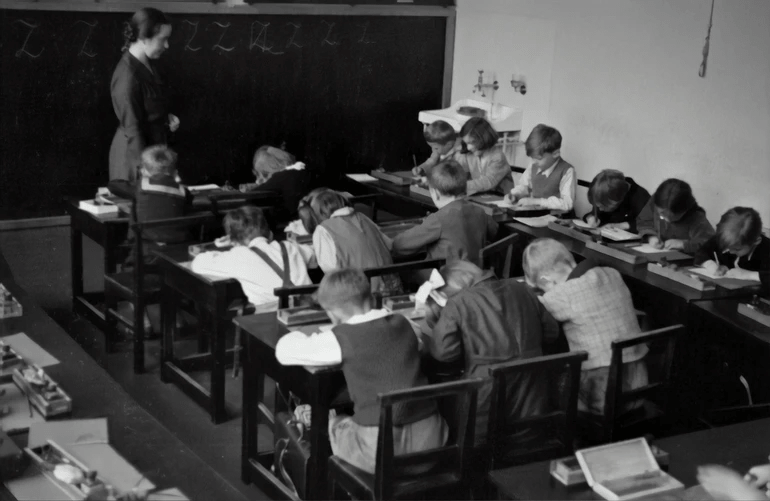Child Labour Essay in English
As of 2020, all over the world, roughly 152 million children are working as laborers in houses, farms, construction sites, and restaurants. The abundance of child workers is significant and warrants both awareness and action.
In this child labor essay for children, we explain what is child labour, why child labor is harmful, and the steps to mitigate child labor.
Quick Navigation
Child Labour Essay: What is child labour?
A child under the age of 18 who is working for money is a child laborer. The employer, who could be the owner of a restaurant, the construction site manager, or anyone who is giving money to the child in return for labor is engaging in child labour.
Of the 152 million children working as child laborers, a shocking 64 million are girls. Most of these girls work in houses as maids. The standard surveys do not include this particular job in their estimates, which leaves out a very significant amount of labor.
At least 90 million of these children work in dangerous places that seriously threaten their lives. These places could be construction sites where huge buildings that constructors build and the cement and bricks pose a serious concern. They could also be the kitchens of a restaurant or a tiffin center where hot oil for cooking has a chance of spilling over. Children working in these conditions are often malnourished because of the unhealthy lifestyle that they lead.
There has been an awareness that child welfare organizations raise about mitigating child labor, but the world is not doing enough, according to the latest 2020 estimates. Battle of Chandawar Essay
Child Labour Essay: Why do children work as laborers?
There may be many reasons why a child decides to leave school and work as a laborer in exchange for money.
- Almost all children working as laborers are between 5 to 11 years, which means they might have had to leave school early. Worse, many parents cannot afford to send their children to school. Thus, they send them into the world to make money.
- At least 3 million children are working to support their poor families who cannot afford a good lifestyle.
- In many cases, children do not even get a chance to go to school. Their situations lead them to know only the life of a laborer.
- In many other cases, the child continues to work only because they have seen their father do it.
- In all cases, the employer sees hiring children for work as cheap manpower since they do not need to pay them much to do the manual work. The situation also works out for the children because they can earn money from a young age and feed their families.
- Most families are also uneducated and thus do not have the awareness or resources to send their children to local schools.
Child Labour Essay: Why is child labour harmful?
Child labour is harmful for many reasons, and most of them relate to the well-being of the children in question.
- Every child laborer is a loss of potential and opportunities
Four years ago, Change.org launched a petition about how youth is crucial. In short, they are the beacon of light for the world. Nothing can be closer to the truth. The nation’s and the world’s young generation has both the brains and the potential to take the country further and make the world a better place to live. If millions of such potential children are working day in and day out for meager wages, then the net loss of potential and opportunity for both the children and the world is big. 15+ Ideas to Celebrate Republic Day in School

- Child labor tells a lot about the country and its governments
Not every country has child labor. Many countries such as Bolivia allow children who are younger than 15 years of age to work, which tells us a lot about the rules of the countries and how their citizens live. Allowing capable children to work non-stop is equivalent to throwing away their talent and locking it in a box. Laws and policies about banning child labor are vital in many countries.
- Child labour jobs pose threats to children’s lives
The dangerous conditions that the children work in pose risks to their lives, especially if the conditions involve lifting heavy material, walking long distances, or dealing with hot items such as hot oil in a restaurant.
- Children workers have little to no time for studies
In a recent survey, 84% of the respondents agreed that they planned to send their kids to school someday, but that day did not arrive, ever. Although many parents think of sending their children to work as a temporary solution, the income that comes slowly chips off their plans for their children. This way, a child in that position has no way of getting out of it.
- Very few children can get out of the cycles
Child labour is a toxic feedback loop where parents who need money send their children to work, and employers pay them minimum wages. Because the children do not go to school and don’t have any background in education, they are very rarely employed in other positions in larger companies.
Every once in a while, a survey finds that a few workers make their way up the ladder. They do so in the same company. Sometimes, they became assistants to their former bosses. In even rarer situations, the worker himself takes the place of his boss and oversees the company. But such cases are rare and happen only when the child has attended school for at least a few years. Top Leadership Qualities for Students
Child Labour Essay: What are the steps to mitigate child labour?
- Businesses and individuals should reduce employing child laborers
The problem begins with employers hiring children and young adults as workers. So the solutions must also start with these specific groups reducing their hiring process of children. If there are no jobs, then the children will not be motivated to work.
- Lack of financial incentives can prove to be helpful
The children work only because they earn money. They are not at that stage where they can recognize what kind of jobs they want to do and career growth accordingly. If the job itself does not offer much money, then, the children will not have any financial incentive to work 18 or more hours a day. This process begins with employers, and they must recognize this and reduce child labour.
- Parents must send their children to schools
Most of the problems in this situation that the employers capitalize on is that the children are uneducated. As a result, the children cannot negotiate well about their salaries, working conditions, or any other aspect of their employment. The first step in stopping this from happening resides in the hands of the parents.

When the child is young, it is the responsibility of the parents to do all that they can to send them to school. Education has many benefits, the chief of them being learning the mindset to make decisions on their own. If they are not educated as much as possible, they will often be at the mercy of their employers. This situation will not be to their benefit. Taking decisions on their own is an important skill to have, and parents need to recognize this as early as possible.
Child Labour Essay: Actions already happening to reduce child labour worldwide
- Nonprofits work toward real change
There are hundreds if not thousands of organizations, most of them non-profit, that are working toward reducing child labor in different parts of the world. Because most of them are not for profit, these organizations are innately inspired to work toward real change. Financial incentives that the sponsors offer does not influence them.
Because of the work that these non-profit organizations are doing every day, at least 4 million children are now working in respectable industries in good positions.
- Increasing awareness about child labour
June 12 each year is a full day dedicated to raising awareness against child labor around the world. This day, programs about child labour and why it is harmful will increase awareness about this serious topic. The more people who know, the lesser this issue will become.

- Strict laws from governments against child labour
Child labour is rampant in many countries like Asia and the middle east. However, the governments of these countries have not put serious laws in place to reduce or even prevent child labor. The lack of such laws is all the more reason to raise awareness about strict rules and why they are necessary to mitigate child labor worldwide.
For example, the government can charge heavy fines for people who employ children to work for them.
All in all, it is critical to note that child labor is a complex, multi-faceted issue that has evolved for many years. The solution will also take many years to eradicate. This solution will require every person to be equally passionate about this issue and contribute in their own way to mitigating it.
The overall goal has to be to think of the welfare of the children and their future. Ultimately, it is vital to remember that all of this work is going toward the welfare of the country as well, since youth is the hope of the nation, after all.




